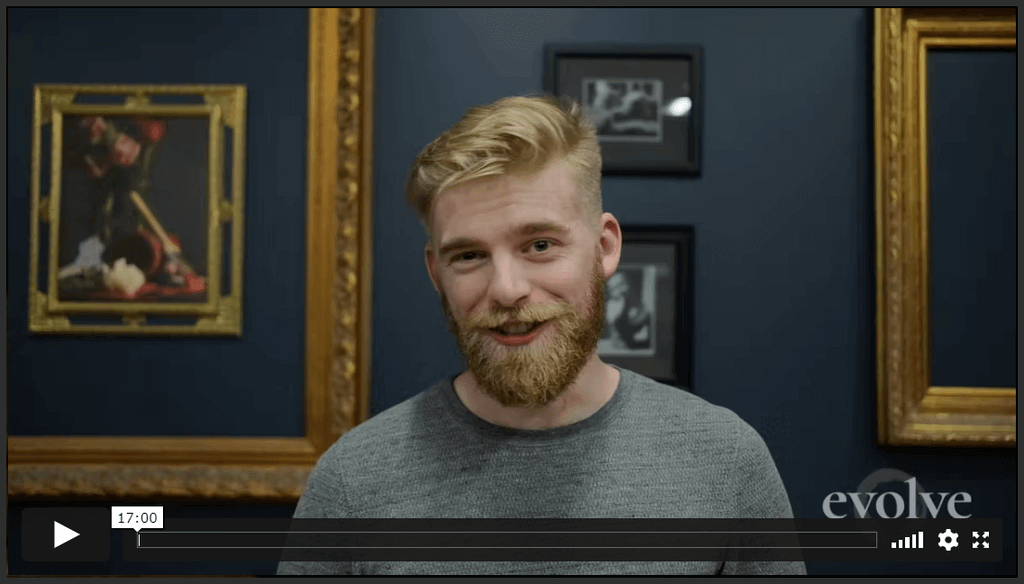CREATING AN OIL PAINTING PORTRAIT
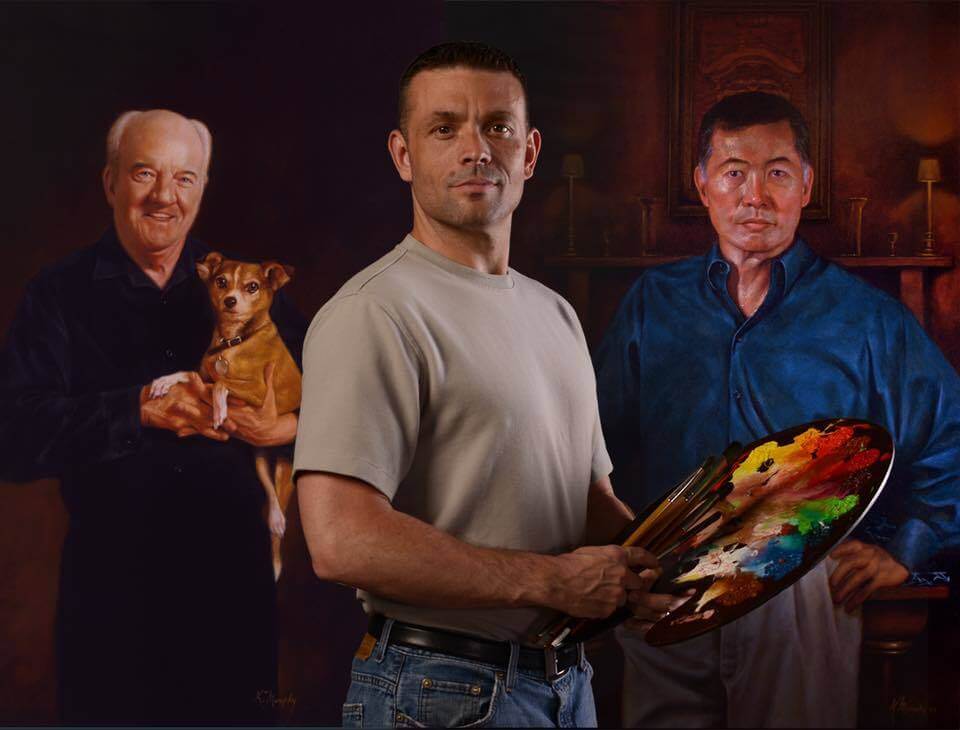
“A portrait is something that freezes and immortalizes a moment in time forever. "
-Kevin Murphy
More...
This post covers how master painters approach creating oil painting portraits. You'll also hear about Kevin Murphy's first portrait and see examples of two famous people he's painted.
The Technical End Of It
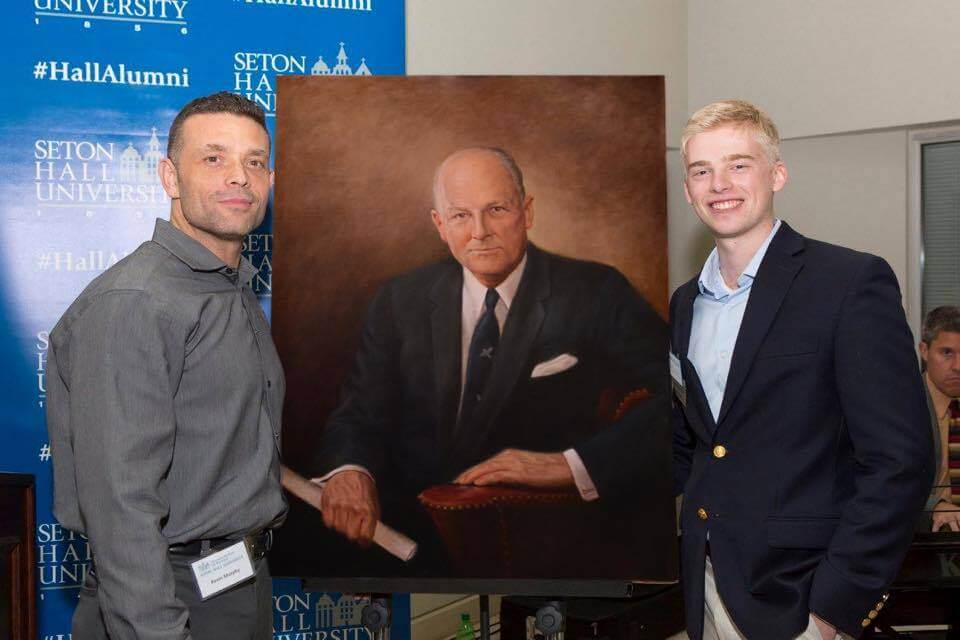
An oil painting portrait commission by Evolve instructor Daniel Folta.
There are a lot of things that lead up to making a portrait. Anybody who professionally paints portraits will tell you that you can’t paint an effective portrait if you know nothing about your subject. But that's a different conversation.
From a technical standpoint, you never paint an actual portrait. As an artist, you paint shapes, values, and colors and you connect them with types of edges. If you've properly done it as an abstract piece of art, then the portrait emerges from it.
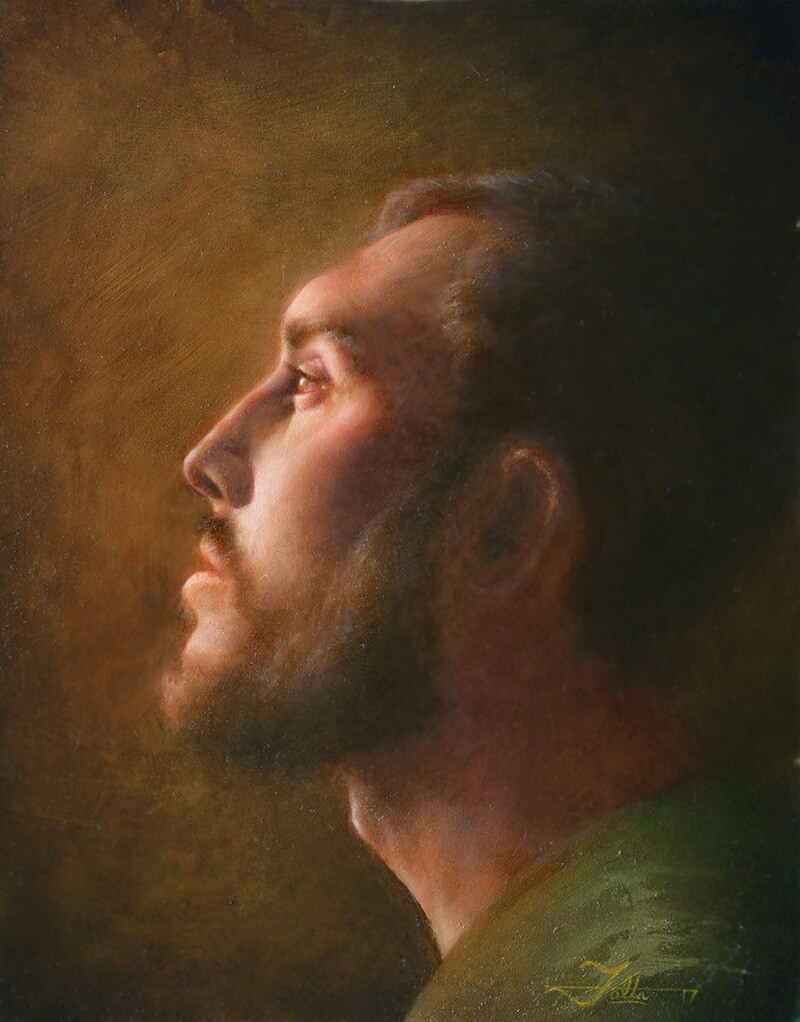
Oil painting portrait by Evolve instructor Daniel Folta. For more visit: www.danielfolta.com
You might think that the more realistic the thing you're trying to paint, the more you have to grab the magnifying glass and slavishly copy. But the truth of the matter is much different. You can see it in artwork by painters like John Singer Sargent. Sargent's portraits are loose and fluid and there are bold strokes that once they go down, are never touched again. These bold strokes don't detract in any way, shape, or form, from the impression of the person that you're seeing.
The Importance of Thinking Abstractly
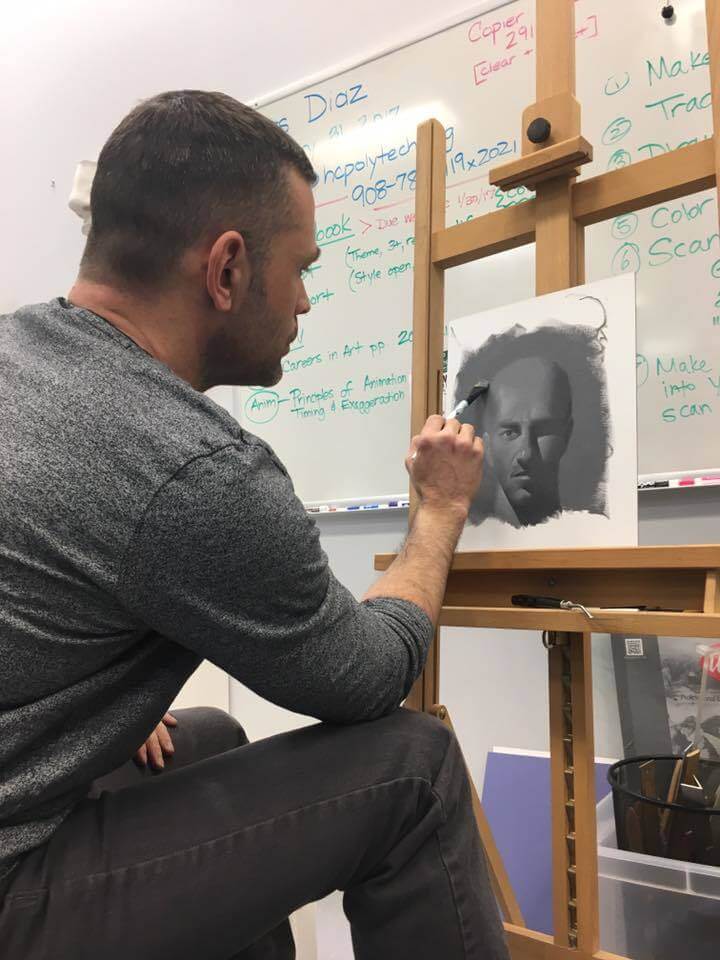
Kevin doing a demo for the visual art class at Hunterdon County Polytech
For example, we don’t want to think of creating a nose. Instead, we want to think of the shape of a light. We want to think about the shape of a shadow composed properly. We want to consider how the light and shadow are married together with a gradient or sharp edge that create the impression of a nose. If the abstract shape is right, the value in the colors is right, and the edges that connect them are right, then a perfect representation of the nose you're looking at emerges from the process.
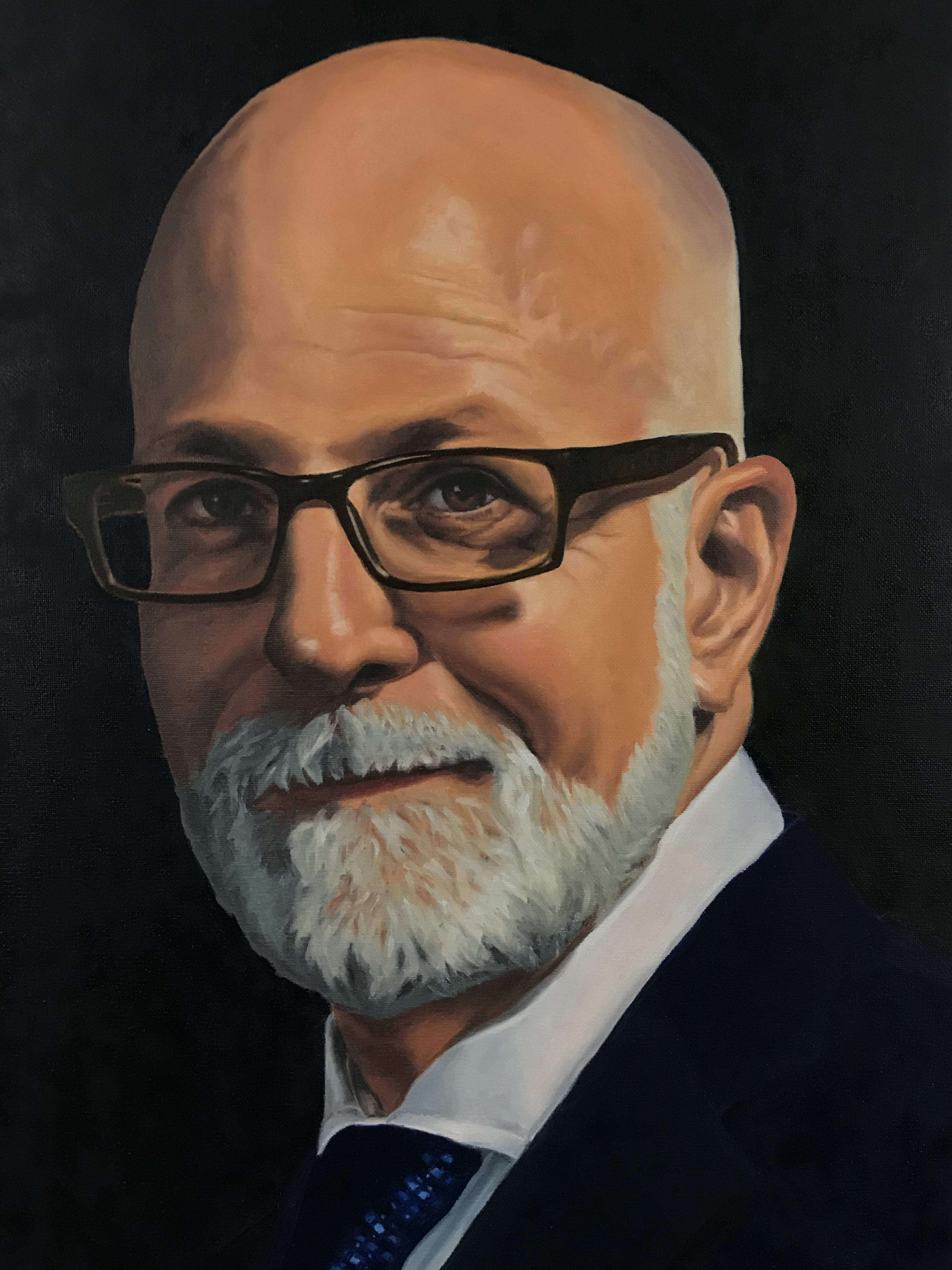
An oil painting portrait completed in Year 1 by Evolve student Michael Boehl.
The Goal Is In The Process
A ball and a portrait are the same things. A ball and a portrait are both painted using values, colors, and edges. Nothing else. The shape of the shadow on the ball and the shape of the light on the ball are just abstract shapes. A portrait is just more shadow-shapes and more light-shapes, but it's nothing more than that. The moment that you start thinking of a portrait as being a painting of a face you're doomed. It's too overwhelming and there's too much information to paint a face. If you think of a face as a series of shadows and lights you can start to capture a likeness of the face with a one-inch brush.
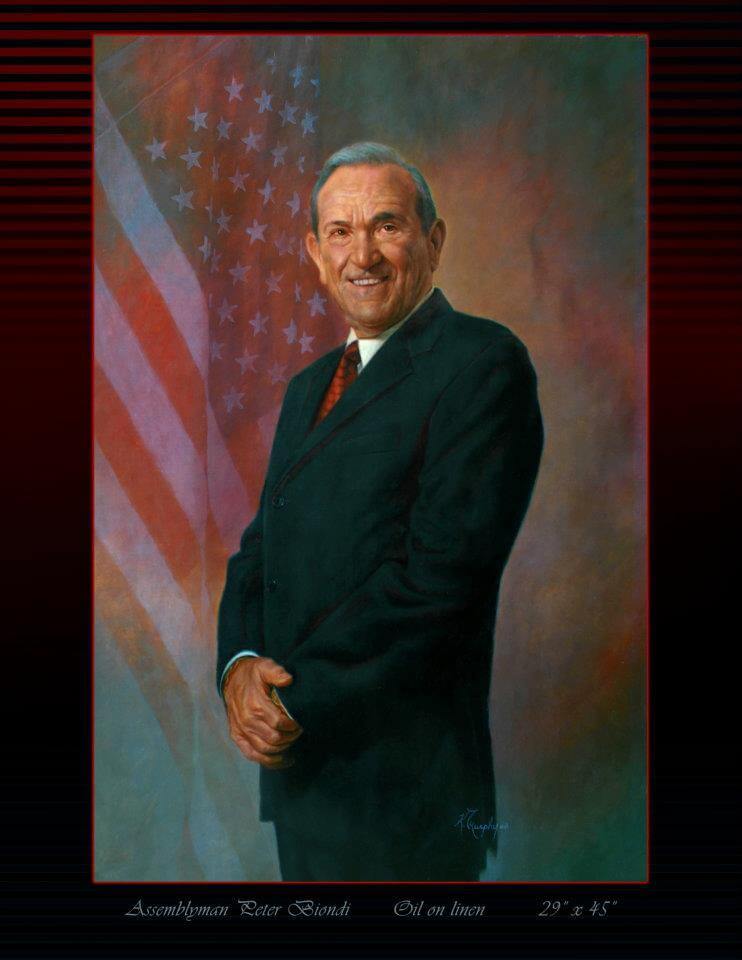
An oil painting portrait completed by Kevin Murphy of Assemblyman Peter Biondi.
Details Are The Easy Part
Of course, there are details in portraits addressed later on, but contrary to how most people think about it, the details of the portrait are the easy part.
Rendering an eye is difficult when you think about rendering an eye. On the other hand, breaking up the shape of an eye socket blocked in with a one-inch brush, that's not so tough. You can see if something is centered or if it's off center a little bit, whether it’s a little high or a little low, and it's easy to break up the shape again. Even within that eye socket, we wouldn't render an eye, instead, we break up the eye socket to account for variations in the shadow and the light that’s there. The eye emerges from the decisions that you make in the process but at no point do you paint an eye. It’s just too complex a subject.
Decisions are made along the way while painting a portrait, and they’re best made by thinking abstractly about the thing you're looking at.
Kevin Murphy’s First Portrait
I (Kevin) never actually imagined myself doing portraiture. The portrait that I attribute as my first was for an author friend of mine. I had done a series of science fiction book cover paintings for this author. At this point, I had painted monsters, dragons, and explosions for quite some time so the idea of painting a mundane portrait of someone standing there wasn’t enticing to me. Now, this portrait was of the author and his wife (it was their 50th wedding anniversary). He reached out to me and asked me if I would be willing to do this portrait which he planned to give to his wife on their anniversary. I agreed to do it because I had a relationship with him.
So I went out and I photographed him and his wife. At the time I knew him fairly well but I didn't know his wife. While I photographed them I got to see them interact together and it was really great getting to know them. It was a wonderful experience.
I did the portrait and then maybe a month later I delivered it for the big anniversary party he hosted. All their friends were there and they unveiled the portrait.
By the time I got back to New York the next evening, I had four messages on my answering machine, of people who attended the party now looking to have portraits done.

Kevin painted many portraits in subsequent years including Richard Herd, actor "Seinfeld" and George Tekei (on right), actor "Star Trek."
No End Of Opportunities
At this point, I still didn't consider myself a portrait painter. I returned the calls and I said to them, I'm not a portrait painter and it's not really something that I see myself doing long-term but I'd be happy to do your portrait. Then to the second person I said, I'm not a portrait painter but I'll put the painting in my queue but when I reach that point in my queue I may not have any interest in doing it. And I said the same thing to the third person.
And that actually became my pattern for a very long time because I didn't see myself as a portrait painter. It wasn't until a few years later when something changed. I did a portrait for a 9/11 widow and that really solidified my understanding that I was a portrait painter.
What made me enjoy it so much was meeting the people that I wouldn't otherwise ever cross paths with and getting to know them and trying to immortalize them or their kids or whoever it was that was being painted and do them justice. That's a real challenge. Up until taking on the first portrait, I really never understood what the challenge was, and how rewarding it could be.
A portrait is something that once somebody has it in their home, it freezes a moment in time forever. It's just such a cool thing to be part of that. To be part of that tradition is very rewarding.


